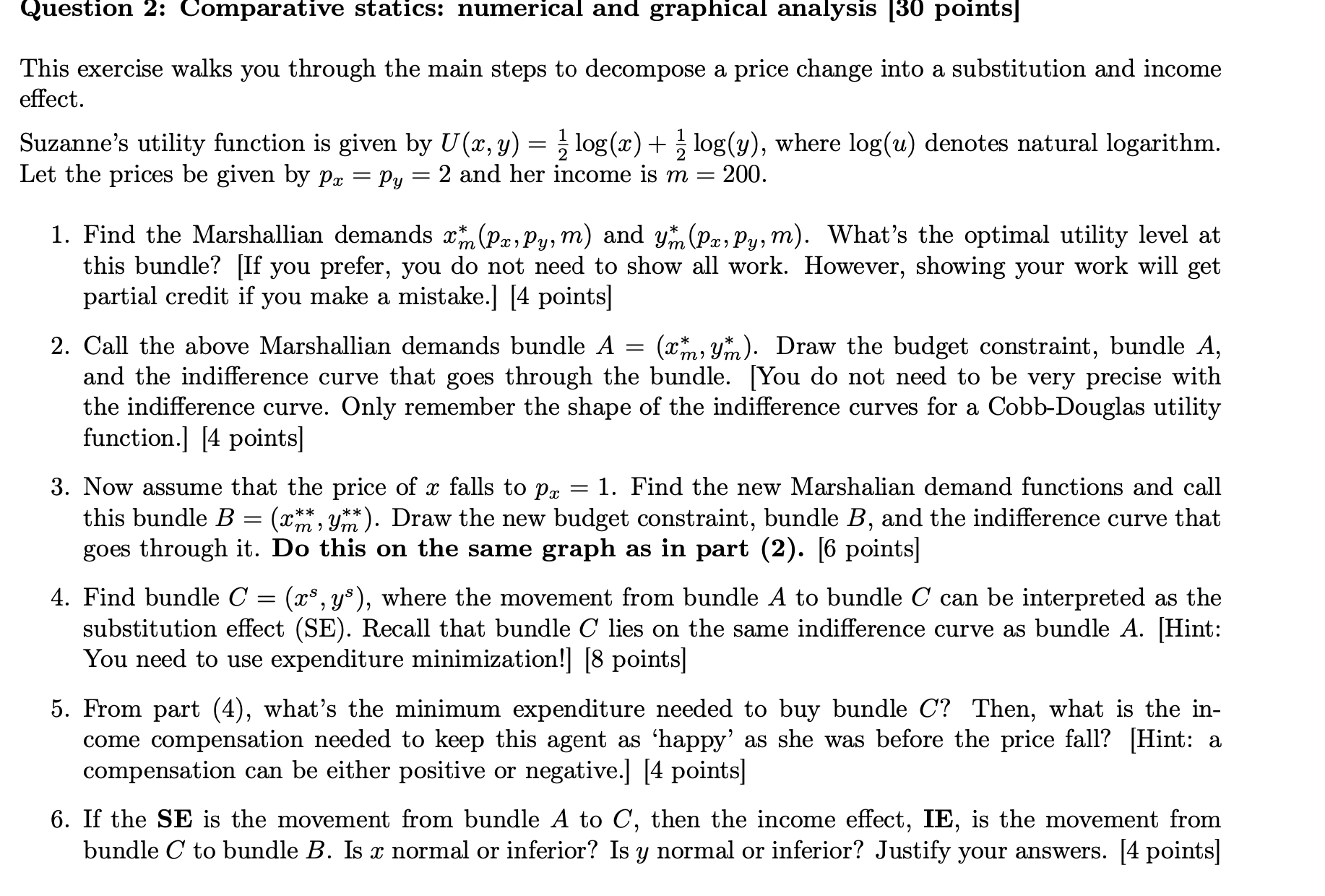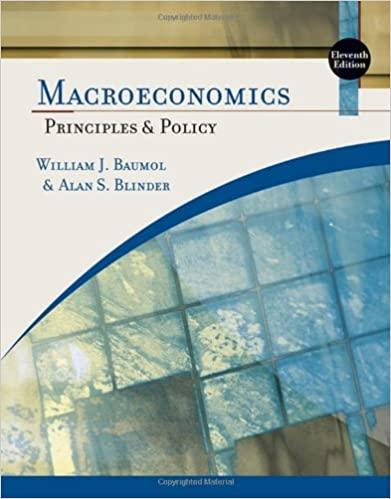Answered step by step
Verified Expert Solution
Question
1 Approved Answer
Question 2: Comparative statics: numerical and graphical analysis [30 points] This exercise walks you through the main steps to decompose a price change into a
Question 2: Comparative statics: numerical and graphical analysis [30 points]
This exercise walks you through the main steps to decompose a price change into a substitution and income effect.
Suzanne's utility function is given byU(x, y) =12log(x) +21log(y), wherelog(u)denotes natural logarithm. Letthepricesbegivenbypx=py=2andherincomeism=200.

Step by Step Solution
There are 3 Steps involved in it
Step: 1

Get Instant Access to Expert-Tailored Solutions
See step-by-step solutions with expert insights and AI powered tools for academic success
Step: 2

Step: 3

Ace Your Homework with AI
Get the answers you need in no time with our AI-driven, step-by-step assistance
Get Started


